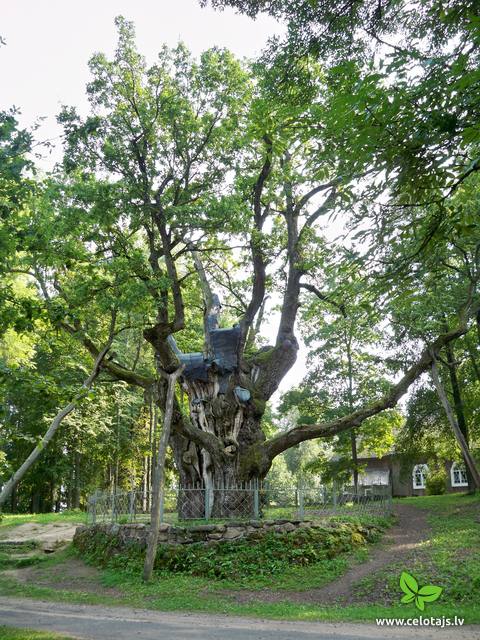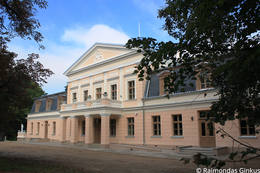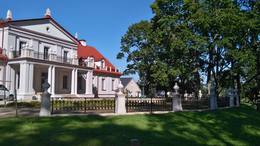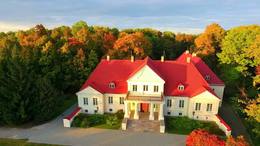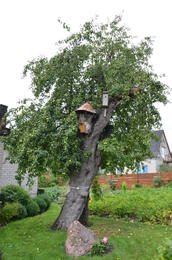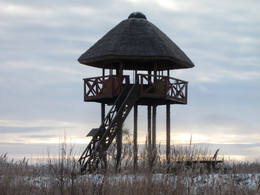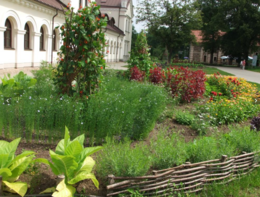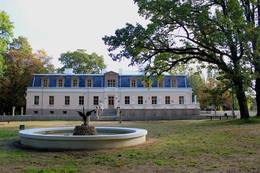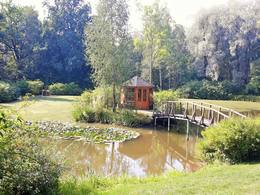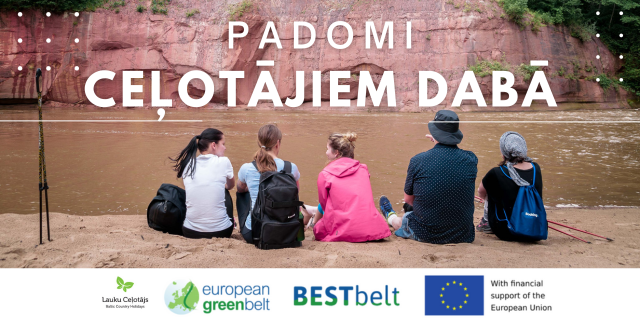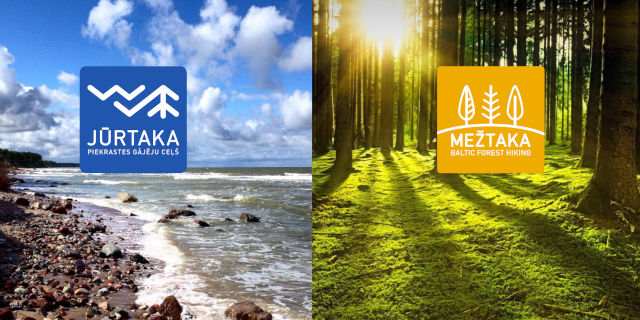Dabas objekti Lietuvā
Ar ko ievērojama daba Lietuvā?
Kuršu kāpa – tuksnešaina zemes strēle starp Baltijas jūru un Kuršu jomu, Žemaitijas pauguraines ainavas, Aukštaitijas ezeru zilo spoguļu labirinti, Dzūkijas priežu sili, Nemunas ielejas loku ainavas un daudzie reģionālie dabas parki, kas veidoti ne tikai dabas aizsardzības, bet arī sabiedrības izglītošanas un atpūtas nolūkos, ir tie dabas vērtumi, kas dabas tūristus piesaista Lietuvā.
Lai uzzinātu vairāk par apmeklējamām teritorijām aicinām izmantot vides vai vietējo gidu pakalpojumus.
Esiet saudzīgi pret dabu ceļojuma laikā - ievērojiet Zaļos padomus!
| Pārskats | Detaļas |
|---|---|
|
Lietuva
Kuršu joma (Kuršių marios) jeb Kuršu līcisNepilnus 100 km garš un līdz 36 km plats saldūdens līcis, kas ziemeļos (starp Klaipēdas ostu un Kopgali) ir savienots ar Baltijas jūru. No Baltijas jūras to atdala iespaidīgā Kuršu kāpu strēle. Kuršu jomā ietek lielākā Lietuvas upe – Nemuna. Kuršu jomas krasti ir g.k. apauguši ar niedrēm, daudzviet purvaini un pat grūti pieejami. Jau kopš seniem laikiem Kuršu joma ir bijusi ļoti nozīmīga vietējo cilvēku ikdienas nodarbes – zivju zvejas vieta. Kuršu joma un tās skaistās ainavas ir daudzviet vērojamas gan no Kuršu kāpu ciemiem, gan arī augstāko kāpu virsotnēm. Kuršu jomu ar prāmi šķērso ikviens, kas no Lietuvas (Krievijas pusē Kuršu strēle ir savienota ar Kaļiņingradas (kādreiz – Sembijas) pussalu) dodas uz Kuršu kāpām. |
|
|
Lietuva
Raganu kalns (Raganų kalnas)Jodkrantes Raganu kalns ir liela paraboliska ar skujkoku mežu apaugusi kāpa. Tā koka skulptūru brīvdabas ekspozīcija (veidošanu uzsāka 1979. g.) ir viens no populārākajiem nacionālā parka apskates objektiem. Pa kāpas nogāzēm un augšpusi ir izveidota taka, kuras malās izvietotas ~ 80 (2007. g.) Lietuvas daiļamata meistaru darinātās koka skulptūras, kas ataino Lietuvas tautas daudzveidīgo mitoloģiskās pasaules tematiku. Takas apskatei nepieciešama ~ 1 h. |
|
|
Lietuva
Nemunas loku reģionālais parksNemunas loku reģionālais parks (Nemuno kilpų regioninis parkas) ir dibināts 1992. g. un tā mērķis ir augu, dzīvnieku, ainavas un ģeoloģisko dabas pieminekļu aizsardzība. Parks ietver piecus lielus Nemunas upes lokus, kuru centrā atrodas Birštonas – viens no nozīmīgākajiem Lietuvas kūrortiem. Nemunas loku stāvajos krastos vietām redzami iespaidīgi nogulumiežu atsegumi. No dabas daudzveidības un ainavas viedokļa nozīmīgas ir arī Nemunas pieteku dziļās gravas. Parkā sastopami veci nogāžu un gravu meži. Punes (Punia) un Prienu (Prienai) mežos aug Lietuvā augstākie koki. Kopumā parkā ir konstatētas 973 augu un 1713 dzīvnieku (zīdītāji, putni, abinieki, rāpuļi, kukaiņi u.c.) un 505 sēņu sugas. Kā nozīmīgi kultūras tradīciju turpinātāji ir jāpiemin Prienu kokapstrādes meistari, kas gatavo koka krustus. |
|
|
Lietuva
Anīkšču reģionālais parksParka „mugurkauls” ir Šventojas (Šventoji) upes (tulkojumā – Svētā upe) ieleja. Šventojas krastā ir apskatāms viens no Lietuvas iespaidīgākajiem Devona perioda smilšakmens atsegumiem - Vetygalos atodanga, bet Varius strauta krastos – kvarca smilšu atsegums - Variaus atodanga. 6 km dienvidos no Anykščiai atrodas otrs Lietuvas lielākais dižakmens (5,7 m augsts, ~ 100 m3) – Puntukas akmuo.
|
|
|
Lietuva
Šarneles (Zviedru) pilskalns (Šarnelės (Švedų) piliakalnis)Viens no iespaidīgākajiem nacionālā parka pilskalniem, kura piekājē atradusies senpilsēta. Arheoloģisko izrakumu gaitā te atrastas kuršu senlietas. Tiesa, mežs un biezais augājs traucē uztvert šī nozīmīgā arheoloģijas pieminekļa patiesos apjomus un formu. Uz pilskalnu vasarās ved izpļauta taka. Ja esat Žemaišu Kalvarijas pusē un atliek brīvs brīdis, tad savā maršrutā var iekļaut arī šo apskates objektu. |
|
|
Lietuva
Mikitai izziņas taka (Mikytų pažintinis takas)Vienu kilometru garā lokveida taka, kas ved pa lielāku nacionālā parka meža masīvu, uzskatāmi attēlo Žemaitijas augstienes un tuvākās apkārtnes reljefa veidošanās vēsturi. No takas augstākā punkta – Mikitai kalna, kas ir sens pagānu upurkalns, paveras (ainaviska stiga) tālākas apkārtnes skats. Kā takas interesantākie apskates objekti ir jāmin teikām apvītais akmens ar Velna pēdu un ar akmeņiem izliktas akas paliekas. |
|
|
Lietuva
Plateļu ezers (Platelių ežeras)Nacionālā parka galvenā ainavas dominante. Ezers ir ~ 8,4 km garš un līdz 3,3 km plats. Tā austrumu krasti pārsvarā ir ar mežiem apauguši, ziemeļrietumu krasts – purvains, bet rietumu krastā parādās apdzīvotas sētas un simpātiskā Plateļu (Plateliai) pilsētiņa, kur meklējamas skaistākās skatu vietas. Ezera krastos ir labi attīstīta infrastruktūra - tūristu mītnes, ēdināšanas uzņēmumi (Plateļos), ūdenssporta un atpūtas inventāra noma. Ūdens dzidruma dēļ, Plateļu ezeru ir iecienījuši zemūdens niršanas entuziasti. Ezerā ir vairākas salas, no kurām interesanta ir Pils salas (Pilies sala), uz kuras no 15. – 16. gs. atradās muiža. Pastāv uzskats, ka senie Plateļu apkārtnes iedzīvotāji sākotnēji ir dzīvojuši uz salas, kuru ar krastu savienojis uz pāļiem celts tilts. Jāpiemin, ka 15 gs. pirmoreiz pieminētā Plateļu pilsētiņa atradusies uz Šventorkalņa (Šventorkalnis) kalna. Apkārt Plateļu ezeram ir izveidots ~ 24 km garš velomaršruts. Tā ir ļoti laba iespēja iepazīt parku videi un ceļotāja veselībai draudzīgā veidā. |
|
|
Lietuva
Ventas reģionālais parksVeidots Ventas upes ielejas un tās pieteku krastu ainavas aizsardzībai. Papilē (Papilė) Ventas labā krasta nogāzē atrodas Baltijas mērogā unikālais un apskatei labiekārtotais Juras perioda atsegums (pazīstams kopš 1925. g.), kura slāņos atrastas un aprakstītas > 300 dažādas dzīvības formas.
|
|
|
Lietuva
Traķu vēsturiskais nacionālais parksParks veidots g.k. daudzveidīgā kultūrvēsturisko objektu klāsta aizsardzībai (Traķu ezerpils, Seno Traķu klosteris, Užutraķu pils, Bražoles pilskalns, karaīmu mantojums u.c.).
|
|
|
Lietuva
Žagares muižas parksŽagares muižas parks – viens no krāšņākajiem un arhitektūras ziņā interesantākajiem parkiem Lietuvā. Muižas parks 1898. – 1900. gadā rekonstruēts un paplašināts pēc ievērojamā dendrologa G.F.Kuphalda projekta. Parkā iestādīti vairāk kā 200 šķirņu stādu. Vairāk kā 100 no tiem aug vēl joprojām. Parkā līdz šim saglabājušies dažādi ceļi, takas, par kurām staigājot var izjust parka varenību un skaistumu. Parkā izveidota dendroloģiska taka, kurā atzīmēta un piedāvāta informācija par 15 retiem kokiem. |
|
|
Lietuva
Nemunas deltas reģionālais parksNemuna pie ietekas Kuršu jomā sadalās divās lielākās straumēs, veidojot Rusnes (Rusnė) salu – savā ziņā unikālu dabas teritoriju ar mitrājiem – purviem, vecupēm, lagūnu ezeriem un palieņu pļavām, kas ir nozīmīga putnu ligzdošanas un atpūtas vieta migrāciju laikā. Pavasaros šeit applūst milzīgas platības. Parkā ietilpst arī teritorija Z un R no Rusnes (lagūnas, purvi, zivju dīķi, Kuršu joma).
|
|
|
Lietuva
Ilzenbergas muižas parksJaukta plāna Ilzenberga muižas parks, izveidots 19.gs. otrajā pusē, ir palicis tāds pats līdz mūsdienām. Gleznaina, izteiksmīga reljefa vietā starp Ilgio un Apvalasa ezeriem. Atjaunojot parku, saglabāta bijušā parka telpiskā struktūra. Parks aizņem 10 ha teritoriju un ir veidots no divām daļām. Pirmā – tā ir salīdzinoši prezīca tainsstūra formas teritorija blakus muižai, apjozta ar mazlapu liepu rindām un ainaviski izvietotiem vietējo un introducēto koku sugu stādījumiem. Otrā daļā – dabiskā meža tipa stādījumi. Lielākais Ilzenberga muižas parkā augošais ozols ir pasludināts par valsts apskargājamo dabas mantojuma objektu. Šī varenā koka stumbra apkārtmērs – 6.3 m, diametrs – 2 m, augstums – 30,5 m. |
|
|
Lietuva
Salu muižas parksDviragio ezera salā atrodošie Salu muiža un parks no putna lidojuma atgādina Lietuvas kartes aprises. Muižas saimniecības austrumu pusē esošais parks – jaukta plānojuma. Tas ir viens no senākajiem parkiem Lietuvā. Vēl Radviļiem saimniekojot, te bija meža parks, kurā koki netika cirsti. Parkā valdīja vietējo sugu lapu koku – kļavas, liepas, oši, apses, kuri šobrīd jau ir divi simtu gadu veci. Uz ezera pusi stiepjošā taka savieno aleju ar parka taku pie ezera. Līdz mūsdienām ir saglabājušies apstādījumi, aleju fragmenti. |
|
|
Lietuva
Biržu reģionālais parksViens no izcilākajiem Baltijas karsta apgabaliem, kas aktīvi veidojas arī mūsdienās, pazemes ūdeņiem šķīdinot ģipšakmens iežus. Te aizvien rodas jauni zemes iegruvumi – karsta kritenes, par kurām klīst teiksmaini nostāsti. Plašā teritorijā ir redzamas arī citas karsta izpausmes – pazemes upes, karsta avoti, t.s. Govs ala (Karvės ola) u.c.
|
|
|
Lietuva
Dzintara līcis (Gintaro įlanka)Pirms Jodkrantes (braucot no Klaipēdas puses) ceļa kreisajā (austrumu) pusē paveras neliels Kuršu jomas paplašinājums – t.s. Dzintara līcis. 1855. g., padziļinot kuģu ceļu, te nejauši atklāja dzintara iegulas. Drīz pēc tam tika nodibināts dzintara ieguves uzņēmums, kas kā lēto darbaspēku izmantoja tuvējās Jodkrantes iedzīvotājus. Palielinot dzintara ieguves apjomus, Jodkrantē uzcēla strādnieku barakas, atvēra laivu remonta darbnīcu un niršanas apģērbu veikalu. Dzintara ieguve notika tikai vasarās, tādēļ darbs ritēja trīs maiņās. Tādējādi no 1860. – 1890. g. Te ieguva 2250 t dzintara! Dzintara līča dibenā (1860. – 1881.) atrada unikālus neolīta un bronzas laikmeta dzintara izstrādājumus. Lielākā daļa no tiem nokļuva tā laika Karalauču (Karliaučiaus) universitātes kolekcijā, no kurienes 1944 g. daļu aizveda uz Gotingenas universitātes Ģeoloģijas un paleontoloģijas muzeju, bet atlikusī - pazuda. Iespējams, ka tā gāja bojā 2. pasaules kara beigu posmā. Dzintara izstrādājumu kopijas var apskatīt Nidā, Mizgirju (Mizgirių) dzintara galerijā - muzejā. |
|
|
Lietuva
Žemaitijas nacionālais parks1991. gadā dibinātais Žemaitijas Nacionālais parks (Žemaitijos Nacionalinis parkas) atrodas Žemaitijas augstienes ziemeļrietumu daļā. Tā reljefu ir veidojis ledājs pirms aptuveni 12 000 gadu. Parks veidots ezeru, upju, mitrāju un mežu ekosistēmu, kā arī žemaišu kultūrvides aizsardzībai. Parkā atrodas Žemaitijas vēsturiskā novada lielākais ezers – Plateļu (Platelių), kas ir izraibināts ar pussalām, līčiem un salām. Ezeri kopumā aizņem ap 7 % no parka teritorijas, bet meži – aptuveni 45 %. Vecu priežu un egļu meži, kā arī jauktie meži ir viena no parka nozīmīgākajām dabas vērtībām. Vairākās vietās Nacionālajā parkā ir sastopami mitrāji, kas ir svarīga dzīves vide retām un aizsargājamām augu un dzīvnieku sugām. Kopumā nacionālajā parkā ir konstatēta 1031 augu suga un ap 2500 dzīvnieku, t.sk. bezmugurkaulnieku sugas. Plateļu (Platelių) ezera piekraste ir populāra atpūtas vieta, īpaši vasaras laikā. Parka teritorijā atrodas daudzi populāri tūrisma objekti, izveidoti kājāmgājēju un velomaršruti. Populārākie kultūras pasākumi ir Meteņu (Užgavėnės) un saulgriežu svinēšana, kā arī reliģiskie svētki, kas notiek Žemaišu Kalvarija (Žemaičių Kalvarija) ciemā. Apmeklētāju centrs atrodas Plateļu pilsētas centrā. |
|
|
Lietuva
Panemuņu reģionālais parksParka teritorija ietver Lietuvas lielākās upes – Nemunas ielejas daļu starp Seredžius un Geldaudišķis ciemiem ar ļoti ainaviskiem skatiem uz tās krastos esošajiem pilskalniem, viduslaiku pilīm, muižām u.c.
|
|
|
Lietuva
Labanoras reģionālais parksViens no Lietuvas mežainākajiem un ezeriem (~ 285) bagātākajiem apvidiem ar plašām aktīvās un pasīvās atpūtas iespējām.
|
|
|
Lietuva
Nagļu dabas rezervāts (Naglių gamtos rezervatas)Aiz Gārņu kalna Kuršu jomas pusē sākas ~ 9 km garš klaju un smilšainu kāpu posms, kas ir viena no neparastākajām Baltijas teritorijām. Tās aizsardzības nolūkos ir izveidots dabas rezervāts. Šī ir arī viena no vietām, kur klejojošās smilšu kāpas apraka Kuršu jomas ciemus. Kā to iepazīt? Spēkratu un divriteņu vadītājiem ir jābrauc līdz ceturtajam (pēc kārtas) autostāvlaukumam un jādodas atklāt Baltijas lielākais smilšu tuksnesis. Lai saglabātu šejienes ainavu un trauslo augāju, kā arī neveicinātu smilšu tālāku kustību, cauri Nagļu dabas rezervātam ir izveidota īpaša koka laipu taka. Kāpas augšdaļas smiltājos laipa beidzas, taču tālāk redzams ar koka mietiņiem marķēts „koridors". Šī ir ļoti populāra pastaigu, izziņas, fotografēšanas un gleznošanas vieta. No kāpu vaļņa virsotnes paveras fantastisks skats un Kuršu strēli, Kuršu jomas un Baltijas jūras zilajiem ūdeņiem. Uzmanību! Šī ir vienīgā vieta no Kopgaļa līdz Nidai, kur klajo un smilšaino kāpu apskatei ir izveidota īpaša taka. Citviet pa kāpu smiltājiem staigāt vai citādi pārvietoties nav atļauts! |
|
|
Lietuva
Rietavas muižas parksRietavas parks bijis lielākais ainaviskais parks Lietuvā. Tas izveidots 1848. – 1855. gados dabiski izretinātjā mežā, rekonstruēts – 1904. – 1905. gadā. Parks ir jaukti plānots. Lielā parka augu valsti veido vietējie krūmi un koki, tajā pašā laikā te aug arī vairāki citzemju augi. No tiem laikiem saglabājušās dažas koku alejas, žoga fragmenti, Baltie un Sarkanie vārti, sarga būdiņa. Parkā ir sarežģīta ūdens krātuvju sistēma – daži dīķi, Jūras upes līkums, vecupes apjosta sala. |
|
|
Lietuva
Joniškeļu muižas parksAinaviskā plāna Joniškeļo muižas parks izveidots 18.gs. otrajā pusē. 19.gs. sākumā pārveidots un paplašināts. Cauri parkam tek Mažupe. No muižas ciematiņa puses abās pusēs gājēju taciņai stiepjas liepu aleja. Muižas priekšā – liels laukums. Parkā aug pāri pat 20 šķirņu vietējo koku un krūmu, un vairāk kā 30 šķirņu un formu introducentu. Ievērojamas un vērtīgas ir divas parastās jeb “čūskas zaru” formas egles, savdabīga parastā ligzdas formas egle. Tāpat šalc Lietuvā diezgan reti sastopamās rietumu zelta tūjas, parastais dažādlapu ozols, divstumbru sudrabkļava, pelēkais riekstkoks. Parkā viz trīs dīķi. |
|
|
Lietuva
Vecākā ābele LietuvāSenākā Lietuvas ābele – augļkoks, kas ir botāniskais mantojuma objekts. Koka šķirne – mežābele. Tā ir vienīgā apsargājamā ābele Lietuvā. |
|
|
Lietuva
Pārnidas kāpa (Parnidžio kopa)Otra vieta Kuršu kāpu Lietuvai piederošajā teritorijā, kur var iepazīt „tuksneša ainavu". 52 m augstās Pārnidas kāpas apskati var sākt ar Saules laikrādi (celts 1995. g., godinot Lietuvas neatkarības atgūšanas dienas piecgadi), no kura paveras Baltijas valstīm neparasta ainava līdz pat Lietuvas – Krievijas robežai. Te joprojām ir redzamas ceļojošās kāpas, kas radās 18. gs., cilvēkiem izcērtot mežus! Interesanti (īpaši vakaros!) ir arī skati uz Nidas pilsētiņu un Nidas ostu. Kuršu jomas pusē ir izveidota marķēta dabas izziņas taka, kas ved (sekojiet līdzi marķējumam!) arī pa kāpas smiltājiem. Šīs vietas apskatei ir jārēķinās ar ~ 1h. Uzmanību! Novirzīties no takas un pārvietoties pa kāpu smiltājiem nav atļauts! |
|
|
Lietuva
Stelmužes muižvietas parksStelmužes muižas parks izveidots 18.gs. vidū uz dienvidiem no Stelmužes ezera. No visām pusēm uz pakalna esošo Jēzus tā Kunga krusta baznīcu ved līkumotas takas, augu valstī dominē liepas, kļavas, ozoli, gobas, bērzi, egles, oši, priedes. Stelmužes muižas parka pakalna pakājē atrodams Laimes avots, var pastaigāt pa ozolu aleju. Stelmužes ozols – vecākais un resnākais Lietuvā augošais ozols ir viens no senākajiem ozoliem Eiropā. Lēš, ka tā vecums ir ap 1500 – 2000 gadiem, tā diametrs ir rekordliels – 3,5 m (lai stumbru apņemtu, vajag 8 – 9 vīrus), augstums 23 m. |
|
|
Lietuva
Rusnė salaSala Nemunas deltā. Entogrāfiskais muzejs, Uostadvaris bāka, putnu vērošanas tornis. |
|
|
Lietuva
Traupja botāniskais dārzsVienīgo skolas botānisko dārzu Lietuvā sāka iekopt 1989. gadā Traupja skolā. Visas augu kolekcijas (kopumā Traupja botāniskajā dārzā aug jau vairāk nekā 8000 augu sugu, formu un šķirņu) ir savācis viens cilvēks – S. Obelevičus. |
|
|
Lietuva
Kauņas jūras reģionālais parksKauņas jūras reģionālais parks (Kauno marių regioninis parkas) dibināts 1992. gadā. Tas ietver Nemunas HES uzpludināto posmu – lielāko Lietuvas ūdenskrātuvi no Kauņas līdz Piļonas (Piliuona) ciemam. Viena no nozīmīgākajām parka vērtībām ir ainava, kas veidojusies ilgā cilvēka un dabas mijiedarbībā. Parkā konstatētas 950 augu sugas, 600 dzīvnieku, t.sk. - 34 zivju sugas. Parka nozīmīgas dabas vērtības ir meži, augstie purvi, kadiķu audze. Parkā ir apskatāmi dažādu vēsturisko periodu liecinieki – senču pilskalni, Pažaislis klosteris, Kauņas cietokšņa Piektais forts, kā arī Rumšišķes (Rumšiškės) brīvdabas muzejs – viens no lielākajiem (195 ha) šāda veida muzejiem Eiropā. Vaišvīdavā (Vaišvydava) ir izveidots parka apmeklētāju centrs, parkā ir dabas takas, piemēram, Žiegždriai ģeoloģiskā taka un Dubravos izziņas taka. |
|
|
Lietuva
Veisieji reģionālais parksVeisieji reģionālais parks (Veisiejų regioninis parkas) veidots (1992.g.) Sudavas augstienes (Sūduvos aukštuma) ainavu, bioloģiskās daudzveidības un kultūras pieminekļu aizsardzībai. Viena no parka bagātībām ir ezeri, kuru iegarenās formas liecina par ledāja darbības rezultātu. Pēdējā apledojuma laikā šeit atradusies ledāja mala. Ezerus (kopā – 37) ieskauj lielāki meža masīvi uz kontinentālām (iekšzemes) kāpām, kas piemēroti atpūtai dabā, dabas vērošanai, ogošanai un sēņošanai. Parkā ir iekārtotas peldvietas, kur patīkami gremdēties vasaras tveicē, izveidotas dabas takas, bet mazās upītes, kas savieno ezerus, ir piemērotas braucieniem ar kanoe laivām. Veisieji reģionālā parka teritorijā ir liela augu un dzīvnieku daudzveidība. Šeit tiek aizsargātas arī tādas retas sugas kā Eiropas kokuvarde Hyla arborea (parka simbols), purva bruņurupucis Emys orbicularis, dažādas orhideju sugas u.c. |
|
|
Lietuva
Žagares reģionālais parksŽagares reģionālais parks organizē dažādas ekskursijas, izglītojošas programmas bērniem un senioriem un jauniešu nometnes. Žagare jau sen ir pazīstama ar savu īpašo ķiršu šķirni, kuru Latvijā pazīst ar nosaukumu ‘Latvijas zemais’, bet lietuvisko nosaukumu varētu tulkot kā ‘Žagares ķirši’. Tai ir vairākas variācijas, kas atšķiras ar dažādu nogatavošanās laiku, ražīgumu, augļu koku formu un citam pazīmēm. Līdz pat mūsdienām šie ķirši aug gandrīz ikvienās mājās un ir kā ekskluzīvs Žagares simbols. |
|
|
Lietuva
Izidora Navidanska botāniskais parksTas ir viens no pirmajiem Lietuvas botāniskajiem parkiem. 1928.gadā I.Navidanskas, kuram tolaik bija vien 16 gadu, uzsāka parka veidošanu. 1965.gadā parku nodēvēja par Žemaitijas botānisko parku. Izidors kopā ar dēlu Rapolu, kurš šobrīd ir parka īpašnieks, turpināja paplašināt parku. |
|
